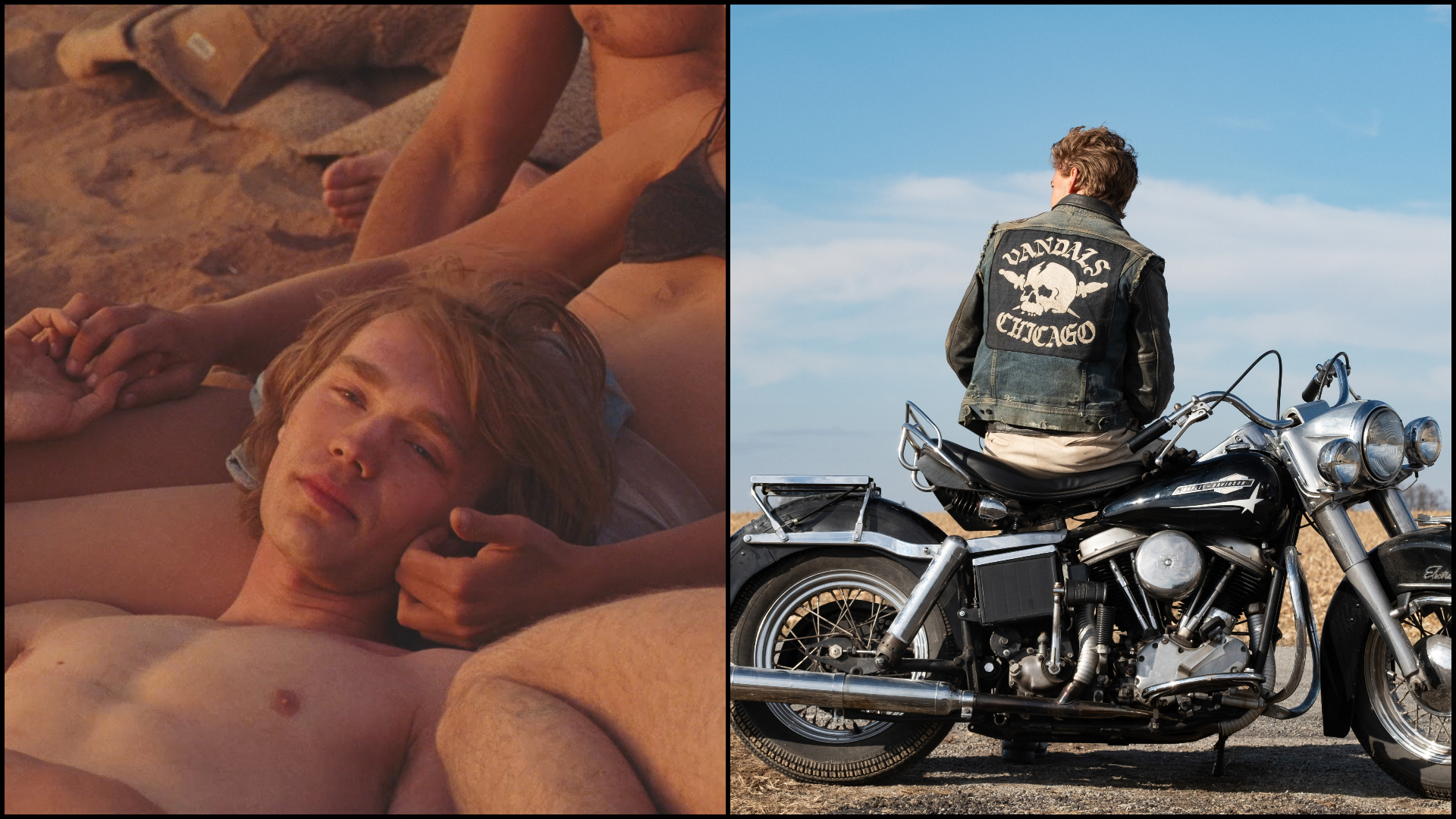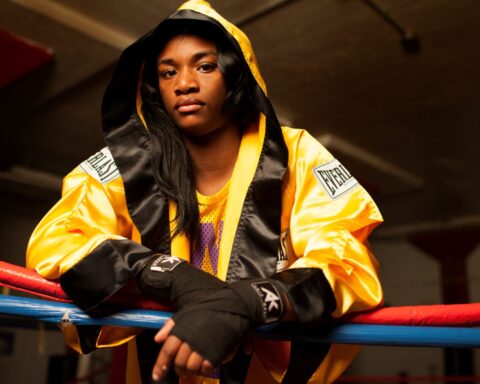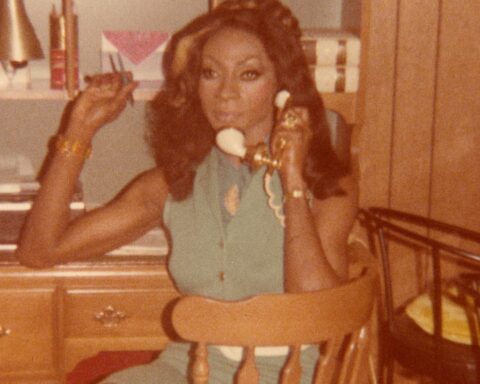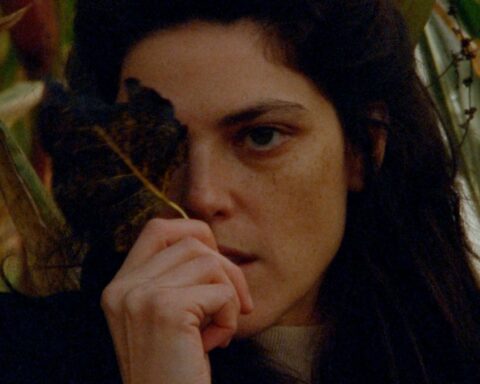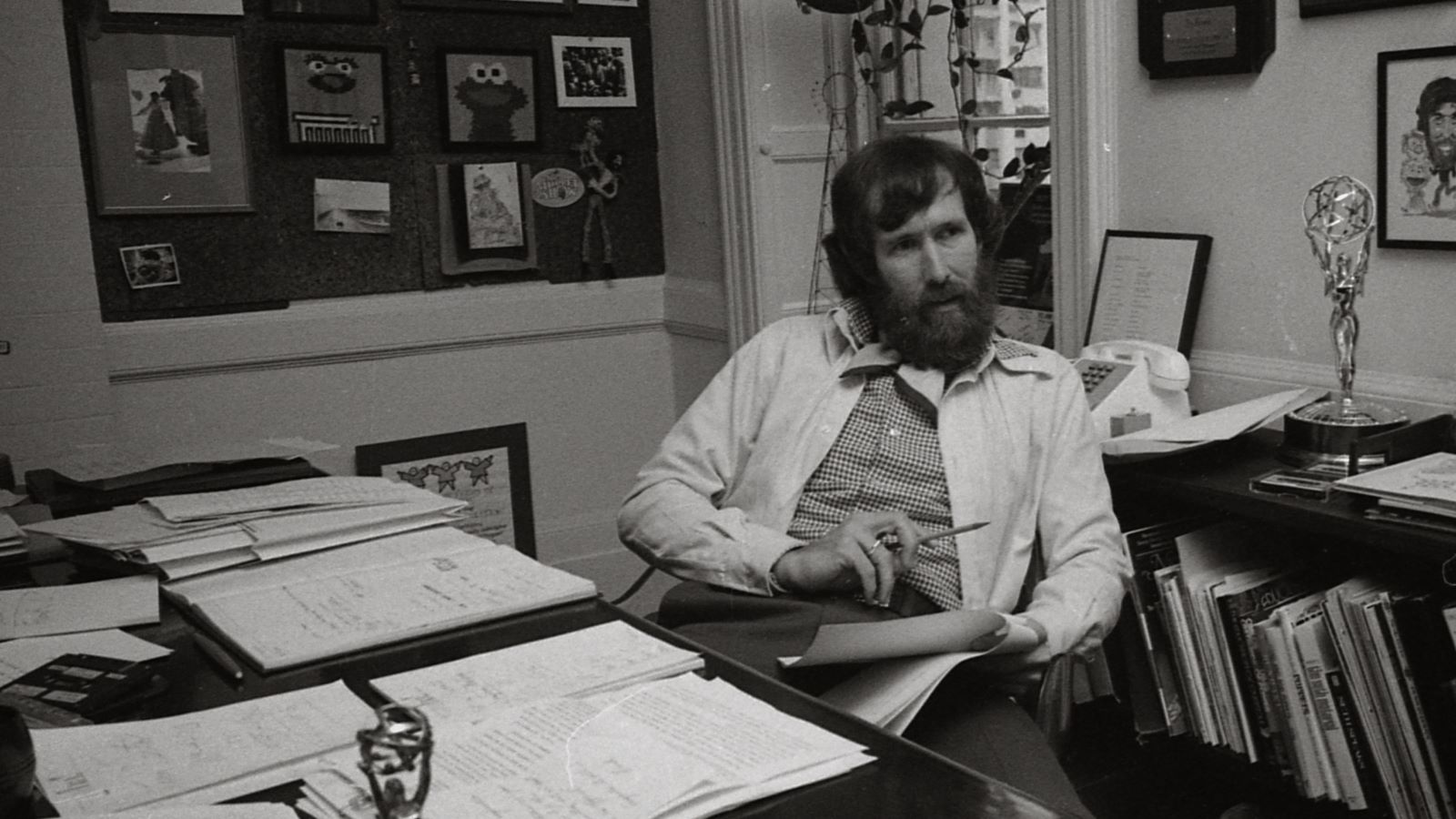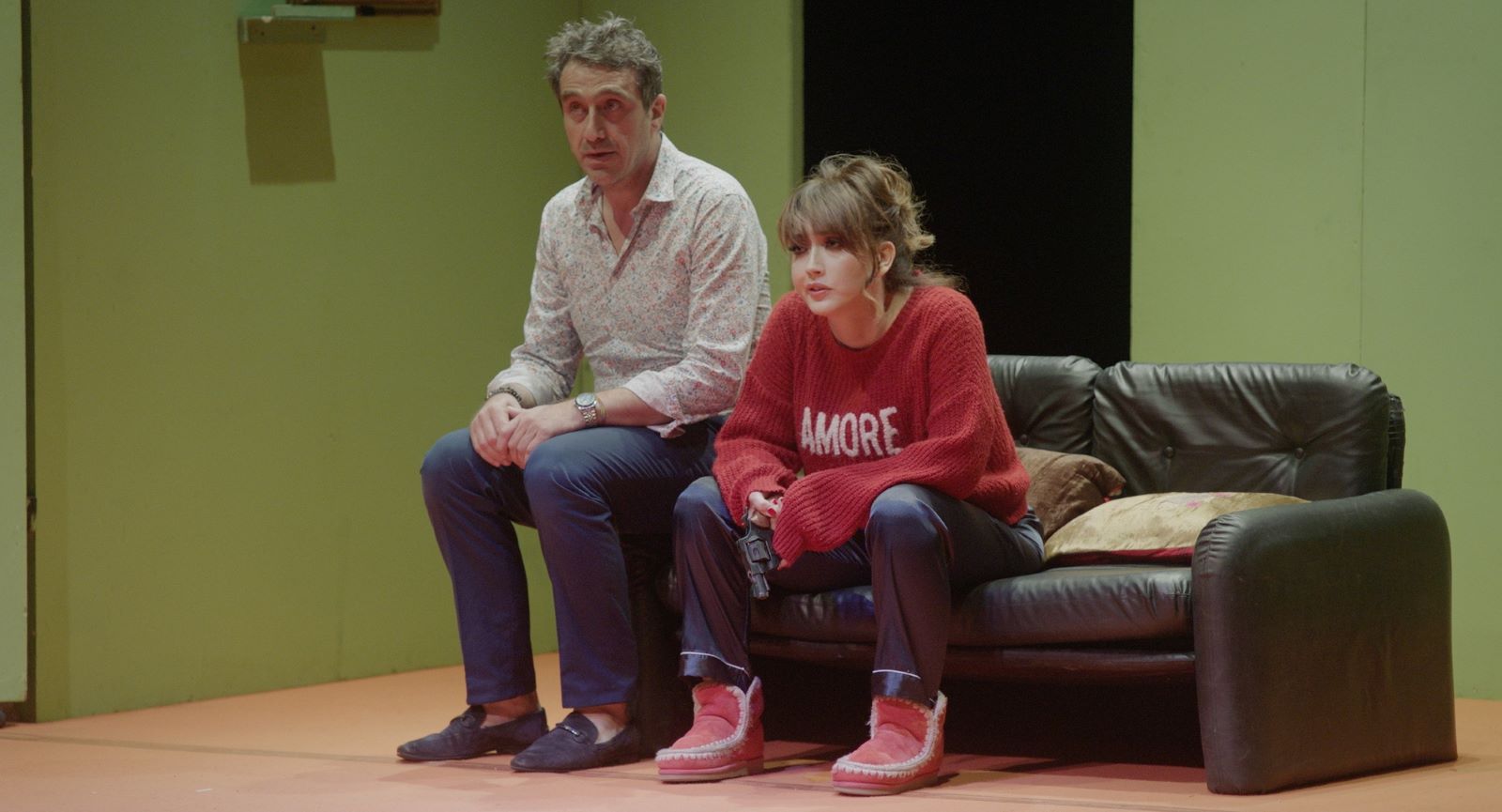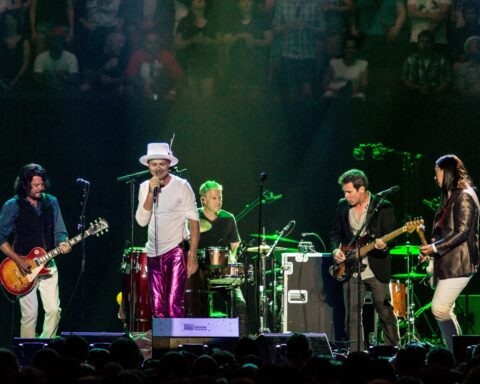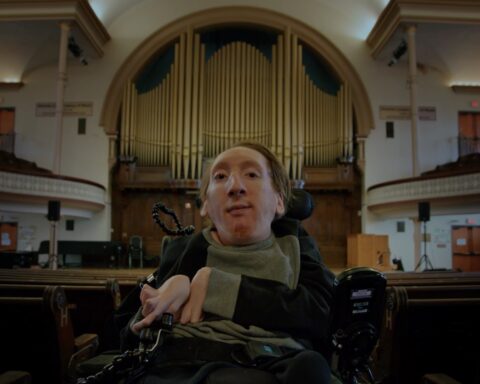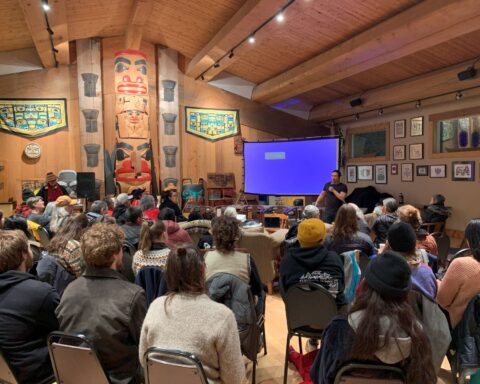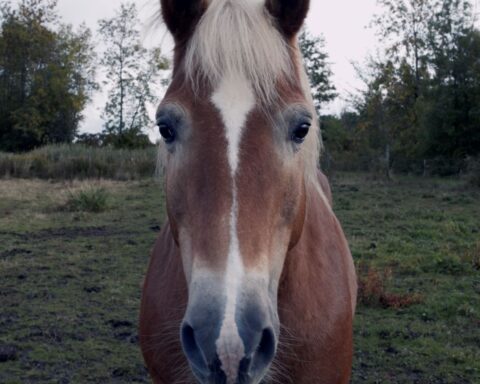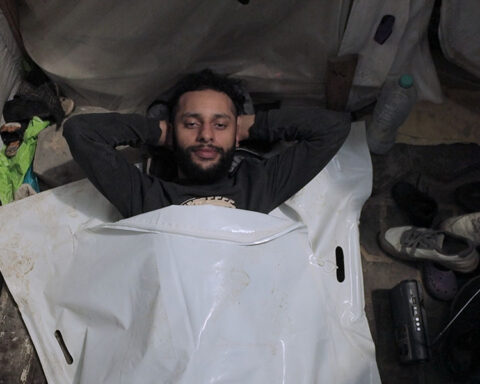If a still photograph tells a thousand words, how much do moving pictures say? Two films released this summer, National Anthem and The Bikeriders, draw inspiration from photography to create compelling dramas rooted in reality. Both films share the visual sense of their source material, but the dramas couldn’t be more different as directors Luke Gilford and Jeff Nichols respectively create fictional stories in which photography serves as the frame of reference. The films invite a conversation about the art of adaptation, but also the line between fiction and non-fiction, documentary and drama, as artists interpret the lives and experiences housed within a single frame.
Besides offering unique avenues to explore the malleability of borders in cinema, both works offer distinct approaches to personal filmmaking. National Anthem, for example, marks the feature debut for writer/director Luke Gilford as he expands upon his photography book of the same name. The film dramatizes a story inspired by the queer rodeos, gay cowboys, and members of the LGBTQ+ community in America’s Midwest whom Gilford encountered throughout his travels. While National Anthem unabashedly frames its portrait of Americana through Gilford’s lens, The Bikeriders filters an adaptation of Danny Lyon’s classic 1968 photobook of American motorcycle gangs through an imagined tale. Writer/director Jeff Nichols (Take Shelter, Loving) uses Lyon’s iconic portraits of the Outlaws biker gang as kernels of inspiration to interrogate America of the present. Both films are striking feats of portraiture that evoke their non-fiction origins with authentic and expansive representations of American life.
For Gilford, who grew up in Colorado, the origins of National Anthem begin with his experience feeling like an outsider as a queer person in rural America. However, he says that he discovered the subculture of queer rodeos in 2016 after answering the call of some Dolly Parton music beckoning him to a corner of a Pride event in California. Speaking with Interview magazine, Gilford recalls meeting members of the International Gay Rodeo Association who greeted him like a pot of gold at the end of the rainbow. He says they welcomed him out to their ranch in New Mexico to learn more.
“On a whim I decided to do it and found myself in New Mexico the very next weekend,” Gilford says. “It truly was the first time I’d ever felt an electric charge of belonging to something. No one ever asked me what I do or what my social media is or anything like that. It was so much more about connecting on a human level and being accepted into the family immediately just because I wanted to be there.”
View this post on Instagram
Gilford, who was already establishing himself in the world of celebrity portraiture—his subjects include Jane Fonda, Lil Nas X, and Pamela Anderson—recalls taking his camera with him to his first queer rodeo in 2016. From there, he spent four years immersing himself in the culture and finding his own chosen family to whom he could relate. “I went to that very first rodeo with the camera, but I was very timid, not knowing what my place would be,” Gilford recently told The Hollywood Reporter.
“At that time, I was doing a lot of celebrity work, but a lot of these people don’t even have smartphones, so they did not care about [that part of my work]. It was so cool that they just embraced me for who I am and not any other reason. They loved having a new member of the community, and they really opened up and let me photograph them and take portraits. During the process, we would tell each other stories. I saw myself reflected so much in their stories of heartbreak, loss and belonging. There were these throughlines and that’s how I started writing and eventually how it became [the movie].”
National Anthem, the book, offers a collection of portraits like the New Mexico cowboys who opened Gilford’s eyes. The book also draws upon his experience living in a queer commune in Tennessee, and several others, after graduating from UCLA. The photobook is a sumptuous, strikingly shot series of portrait of LGBTQ+ people on the range. From intimate, personal close-ups to glitter-emblazoned divas at the rodeo, to the cover photo of two nude cowboys sharing a saddle, the portraits reflect an intimate immersion in rodeo culture. But they’re also an earnest effort to share a positive and inclusive image of western Americana.
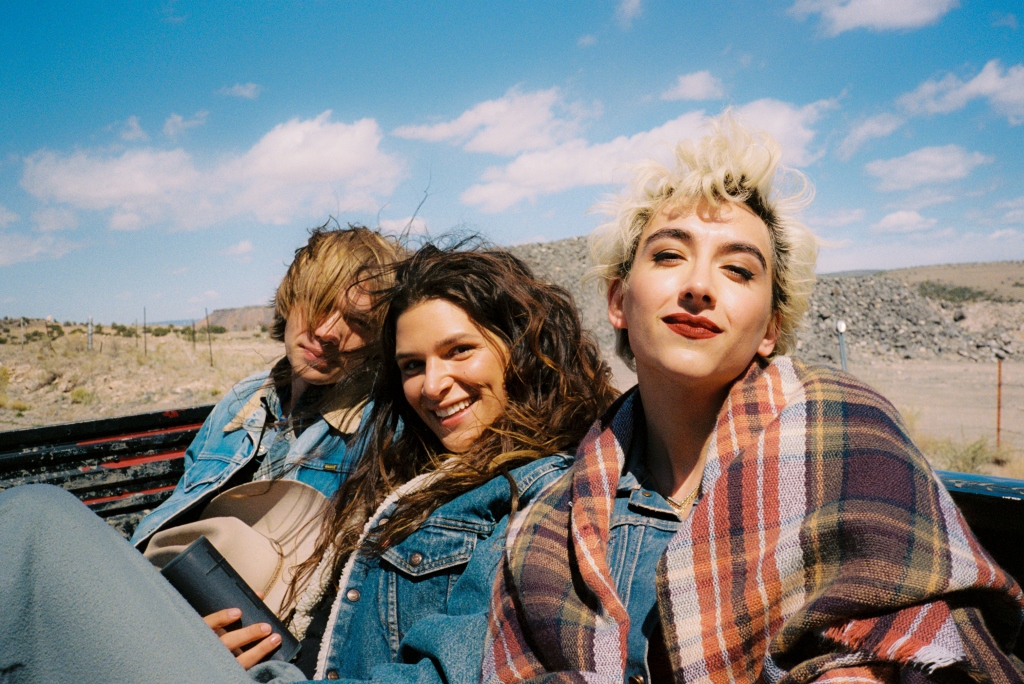
National Anthem, the movie, stars Charlie Plummer (Lean on Pete) as Dylan. The character isn’t necessarily a surrogate for Gilford as he discovers the world of queer rodeo—and himself—as a hired hand at a ranch run by a LGBTQ+ collective. Dylan finds his people as the ranch offers a haven from his mother (Robyn Lively), who pilfers his hard-earned cash. The film loosely draws upon Gilford’s encounters while take portraits for National Anthem, as Dylan falls hard for Sky (Eve Lindley) and, to a degree, her boyfriend Pepe (Rene Rosado) in a storyline inspired by Gilford’s own relationship with a transwoman who was in an open partnership.
Dylan’s fling with Sky and Pepe culminates with a threesome in the desert, but his real coming out, so to speak, happens at the rodeo. Gilford harnesses the positive energy and open atmosphere that inspires his collection of photography by shooting the rodeo scenes at the actual grounds with everyday ranchers, riders, and cowboys thriving in the arena.
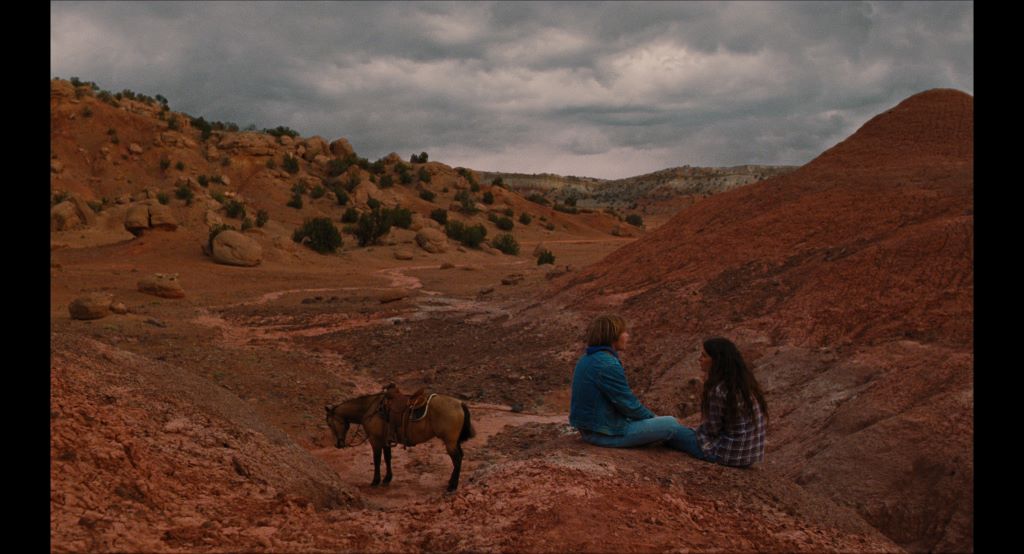
Moreover, Gilford displays handsome continuity while depicting the lives of ranchers in different visual mediums. The 35mm images of the film, captured in a brisk 17-day shoot, mirror the aesthetic of his photographs. “I had a very specific look to it that I had created with my book first. That’s even why we used that format of 1.66:1, because it’s the closest connection to the 4×5 format for the photography,” Gilford explains at Awards Watch. “So even things like that where [cinematographer Kate Arizmendi] just really wanted to maintain the connection to the source material.”
National Anthem, the book and the film, both offer stirringly vibrant portraits that harness natural light to evoke the warmth of the community. Gilford defines these stories not by the tragedies that often prove cliché, but by making visible the love and tenderness that exists in seemingly rugged environments.
“I wanted to accurately dignify this world on screen and share it in an authentic light,” Gilford says in an interview with the San Francisco Bay Times. “It was important to me to not recreate any rodeos. We were there with real people and the real community. What you are seeing is it. That fluidity exists in real life. I am so inspired by it.”
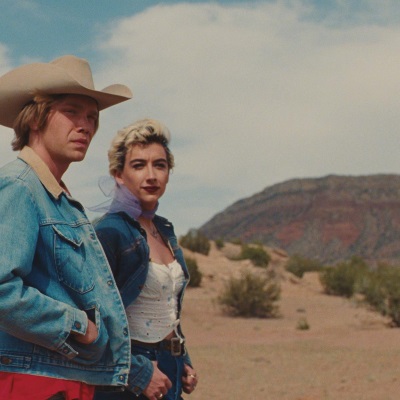
Eventually, Dylan summons his courage to ride a bull, which proves just as daunting as a drag performance later in the film. In both cases, however, a little glitter and eye make-up help him fit right in. The film, like Gilford’s photographs, deconstructs the icon of the American cowboy, situating itself within a small but significant parcel of American films that engage with portrait of rural queerness and the relative freedom that comes from finding a community in a town where everyone knows one’s business.
Moreover, Gilford frequently connects the elements of drag and rodeo that call attention to the performative dynamics of gender. “In many ways, it’s the West’s traditional form of drag performance,” Gilford says of the rodeo. National Anthem appropriately ends with a bedazzled rendition of “The Star Spangled Banner” as Dylan’s journey with both his biological family and his found one comes full circle at the rodeo. The cowboy takes the arena while an evocative sunset offers shades of pink, purple, and orange that beckon the approach of a new day.
“These are queer people living in red states and not stopping to apologize and explain themselves,” Gilford observes. “They are living their truth every day, bravely…Not only that, they are taking back the flag and cowboy archetypes that are traditionally so heteronormative and masculine. They are saying, ‘I can be a cowboy, too, even if I am non-binary, or trans, or Black, or a woman.’ That’s really what America should symbolize, the freedom to be whatever we want to be.”
Codes and icons of masculinity equally mark the evocative images of Danny Lyon’s photographs in The Bikeriders and the film they inspire. Lyon’s photos, first published in a striking black and white collection, feature old-school bikers who mirror Marlon Brando’s leather-clad icon from The Wild One. (Tom Hardy’s character Johnny, the leader of The Bikeriders’ fictional bike gang The Vandals, watches the film and mimics Brando’s dress and speech.)
Lyon’s pictures offer snapshots of a “golden age” of biker gangs in an era of protest over the Vietnam War when motorcycle clubs offered men an outlet, particularly for veterans seeking camaraderie and post-war adrenaline rushes after. The film finds as its starting point a passing reference in Lyon’s book about a biker being challenged for the leadership of the gang. The fate hangs over Johnny throughout the film.
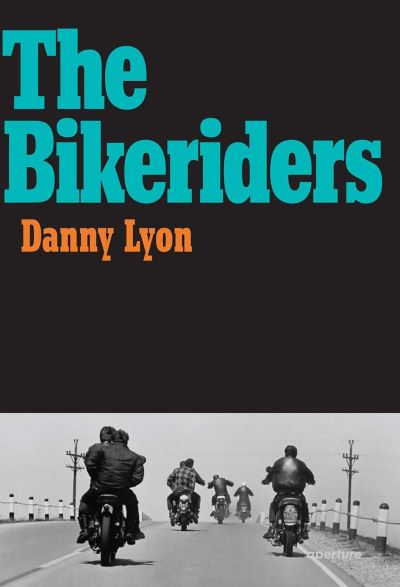 Nichols’ film offers something of an origin story for Lyon’s book. Lyon appears as a character in the film, played by Mike Faist, who travels with The Vandals, interviews members and their families, and takes their pictures. Some of the film’s promotional stills are actually shots that Faist took while in character.
Nichols’ film offers something of an origin story for Lyon’s book. Lyon appears as a character in the film, played by Mike Faist, who travels with The Vandals, interviews members and their families, and takes their pictures. Some of the film’s promotional stills are actually shots that Faist took while in character.
With the photographer serving as the audience’s eyes into the story behind the photos, Nichols liberally adapts The Bikeriders while drawing upon interviews that Lyon recorded for his book. Nichols takes particular interest in the story of Kathy, the wife of one of The Outlaws. The film frames the story using Lyon’s interview with Kathy, played by Jodie Comer, who describes her attraction to the bikers after falling in with Benny (Austin Butler).
Unlike Gilford, Nichols isn’t turning his lens towards his own people. The filmmaker admits in interviews that he relates not to the biker culture, but to Lyon’s slice of Americana and working class life. “I felt very distant from this accent,” explains Nichols in an interview with A Rabbit’s Foot. “I grew up in the American South, and this Midwestern accent just wasn’t a voice I was comfortable writing in, and I wasn’t at all a part of motorcycle culture. I wasn’t a biker. I wasn’t in a club. So it all just felt very foreign. But the more time I spent with the book, reading it over and over again, and listening to these audio recordings of the real people talking, I became more and more comfortable with the idea of me being the one to bring these voices to life.”
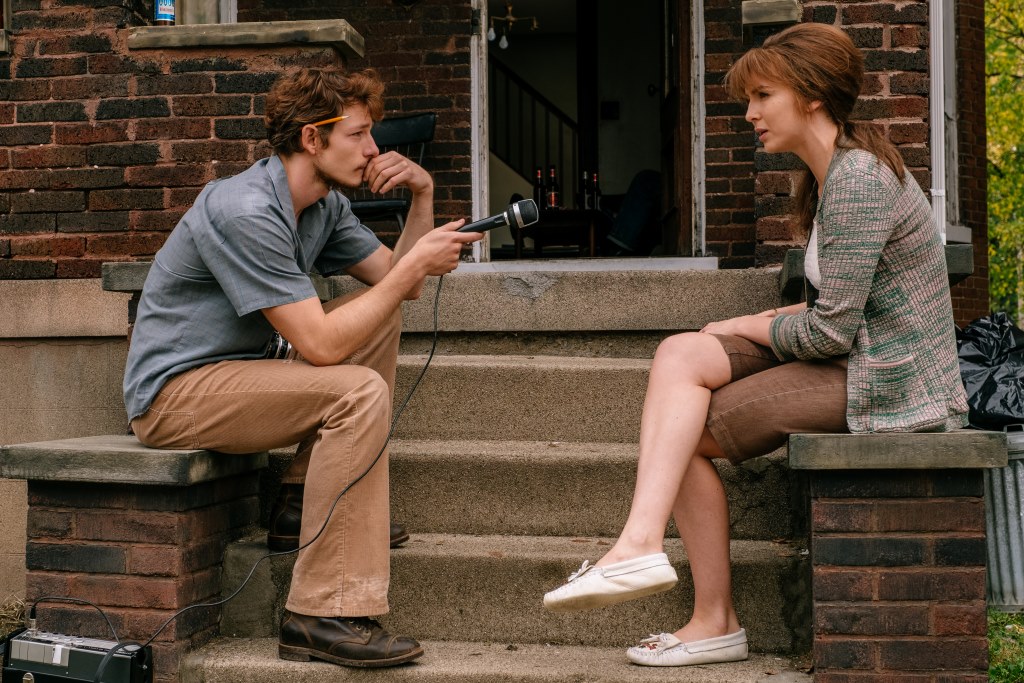
While The Bikeriders is more overtly stylised with Hollywood stars playing the bikers, Nichols, like Gilford, embeds the film with hybrid elements. For example, Nichols remains more faithful to the text of Lyon’s book than he does to the iconic photos. “I started with some of those photos, and it’s really with the bulk of Kathy’s interview where she’s talking about the first time she met the guys. That’s lifted pretty accurately from the book,” he says in an interview with Immersive Media. “‘It can’t be love. It must be stupidity.’ It’s a brilliant line, not one that I wrote. It was from the real Kathy. She’s saying that.”
Nichols, however, doesn’t base the story on the lives of the real Kathy and Benny. What audiences see in The Bikeriders is straight-up fiction(ish) as Nichols uses the photos as a jumping off point. But the words, here are there, are real. Nichols is especially faithful to Kathy’s observations about the bikers and the codes of honour and violence that govern them.
“She’s a great observer,” Nichols tells Vanity Fair. “There’s tension between glorifying them and also understanding them and showing them for what they are and what they aren’t. Kathy carries that tension better than anyone because she sees all the cracks and all the silliness, but she’s also wrapped up in it.”
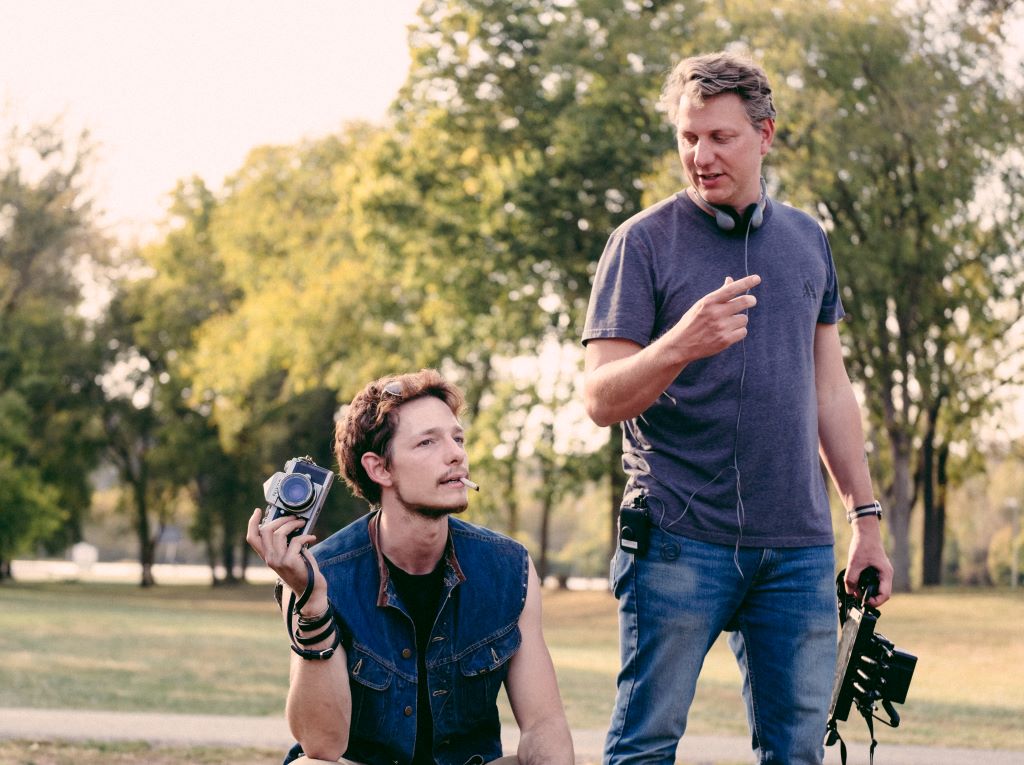
Similarly, The Bikeriders features a bravura monologue by Michael Shannon as Zipco, a Latvian ex-pat and war veteran who shares how being part of The Vandals affords him a sense of belonging. Nichols roots the scene in an interview that Lyon conducted with a biker of the same name. “I didn’t have to embellish them much and didn’t really want to, but the interpretation of those words is what was so interesting,” Nichols explains.
Nichols admits that he resisted extensive research beyond the period elements, some of which came from Lyon. As he tells Little White Lies, his process differs from his own adaptation of a documentary with Loving (2016), which dramatized Nancy Buirski’s doc The Loving Story (2011) and similarly lifted dialogue to preserve authenticity. “This isn’t a documentary. I’m not trying to get their story right in terms of the specific details,” he says, noting that he didn’t concern himself too much with tracking down the original subjects of Lyon’s photos and interviews, although he did look for Kathy.
“In fact, I don’t want to even know,” Nichols continues. “Because I want to tell my own story. I want to tell a story that is somehow able to just capture this nostalgic feeling of this very specific thing at a very specific time, in a very specific place, that existed, it formed and then disappeared. And so I really didn’t want the constraints of, you know, ‘this is really how The Outlaws did it.’”
Aesthetically, The Bikeriders hews closer to Nichols’ rural Gothic Mud (2013), which was inspired by Turner Browne’s 1993 photo book The Last River: Life Along Arkansas’s Lower White. But the elegiac colour pattern of The Bikeriders, with its deep hues that contrast with faded shades, actually offers a nod to Lyon’s own photos. Although the 1968 publication of The Bikeriders is in black and white, Nichols says he first encountered the photographs when he picked up the 2003 reissue of the book when visiting his brother, musician Ben Nichols. The reissue features the photographs in colour accompanied by the text.
“The colour photographs are the ones that really brought it to life for me,” Nichols tells Roger Ebert. “When you see it in colour, you realize that those gas tanks, which had looked grey or black, were actually purple and orange. It felt like such a more vibrant world. It actually feels relatable.”
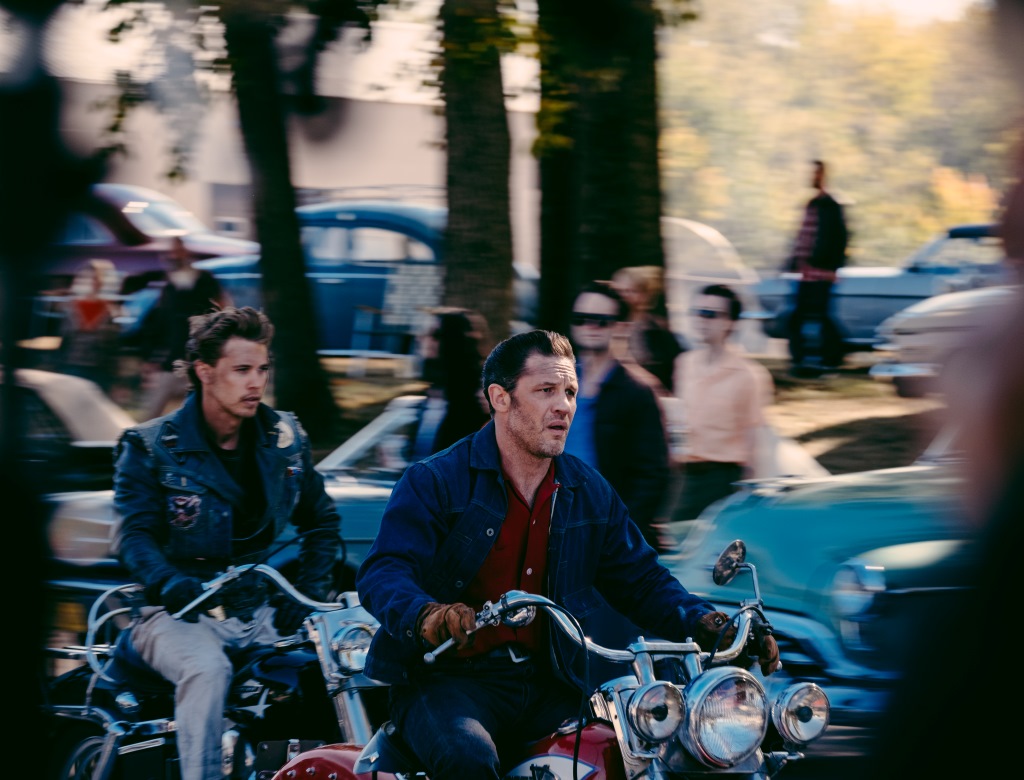
To shoot in black and white risks romanticising the period. Nichols, like Gilford, instead looks to the past to interrogate the ways in which these codes of masculinity became ingrained in the cultural fabric. At the same time, both films distinctly observe the role of community and chosen families as snapshots of outsiders who find their voice outside mainstream culture.
“Everybody feels alone. Until they find this group of other outsiders or weirdos or freaks or anything else. And that’s real,” observes Nichols in Rabbit’s Foot. “What this film is ultimately saying about masculinity is that there’s this tension in it. There’s this tearing between false notions of masculinity—that we can’t share our feelings, that we have to be tough, that we have to be the protectors—versus the reality of masculinity—that there’s real beauty in some of those same ideas, there’s real attractiveness.”
While National Anthem and The Bikeriders have little in common upon first glance, they reveal more upon closer inspection of their photography roots. Both films add to the expanding malleability of fiction and non-fiction filmmaking as Gilford and Nichols navigate the lived experiences of the people who gave their likeness to iconic photographs and, in turn, moving pictures. From cowboys to easy riders, they tell stories of lives too often left outside the frame, ironically by filmmakers who were inspired to expand stories housed within a single shot.




